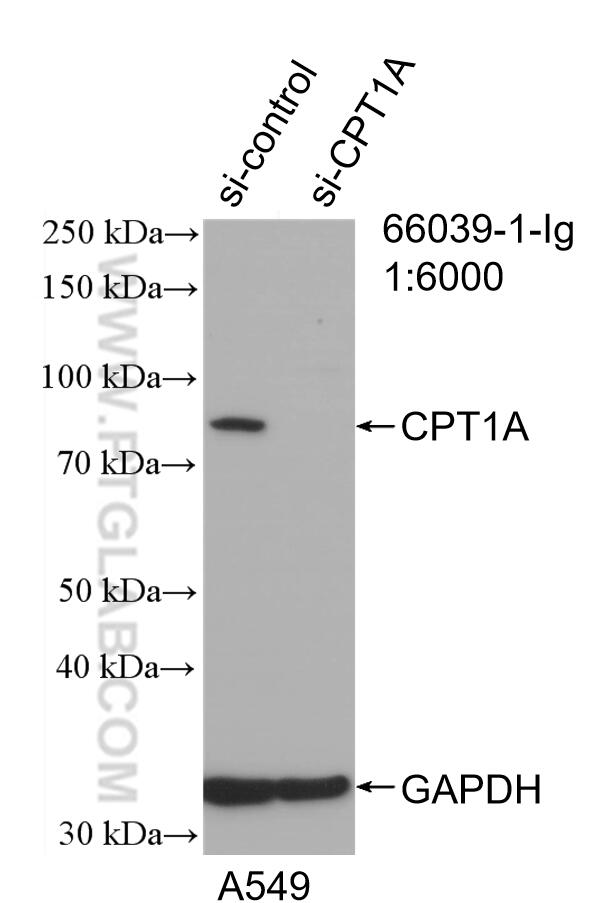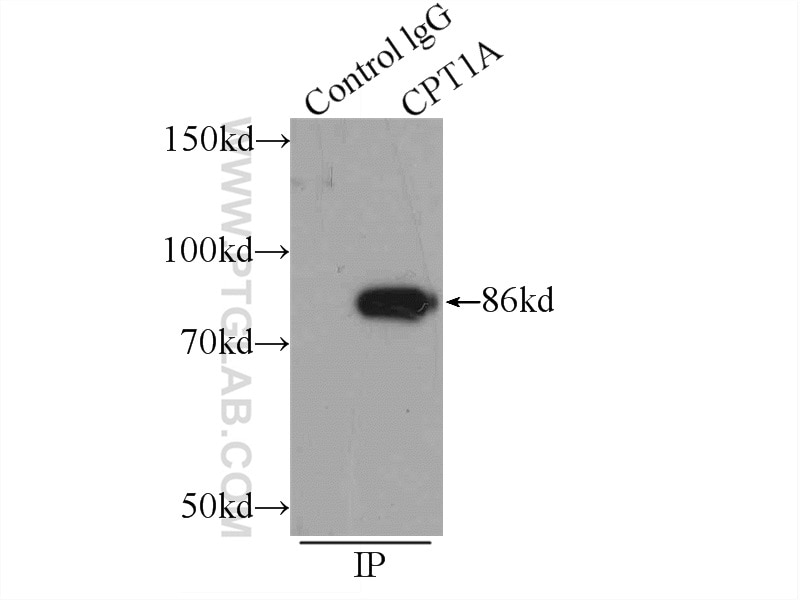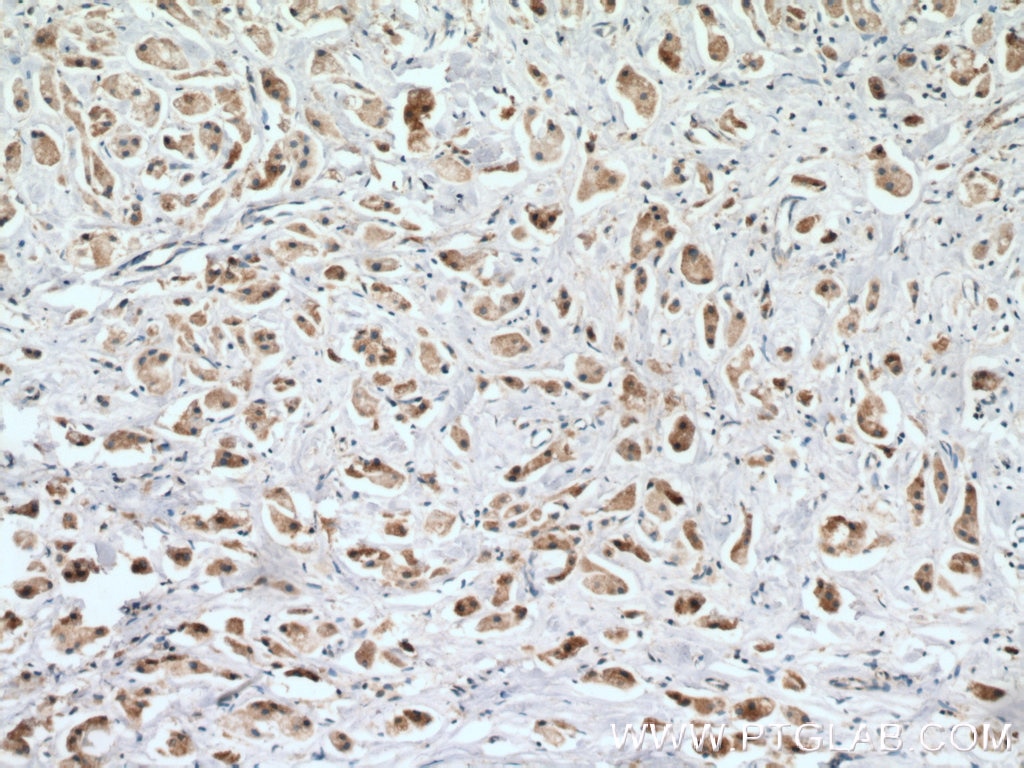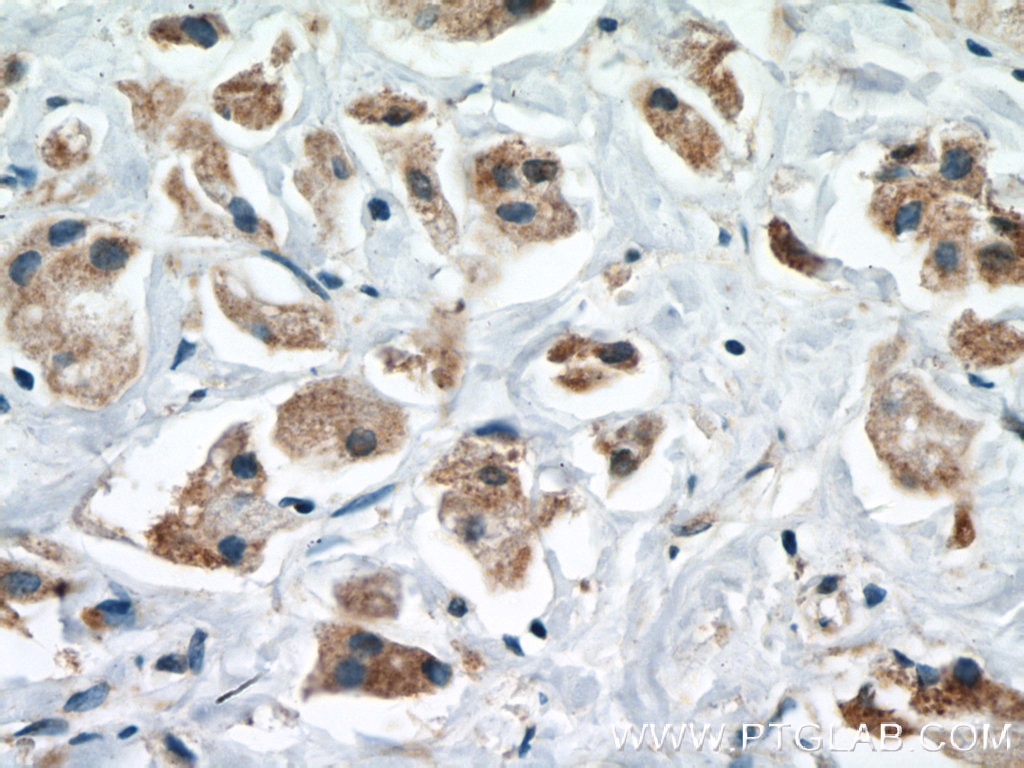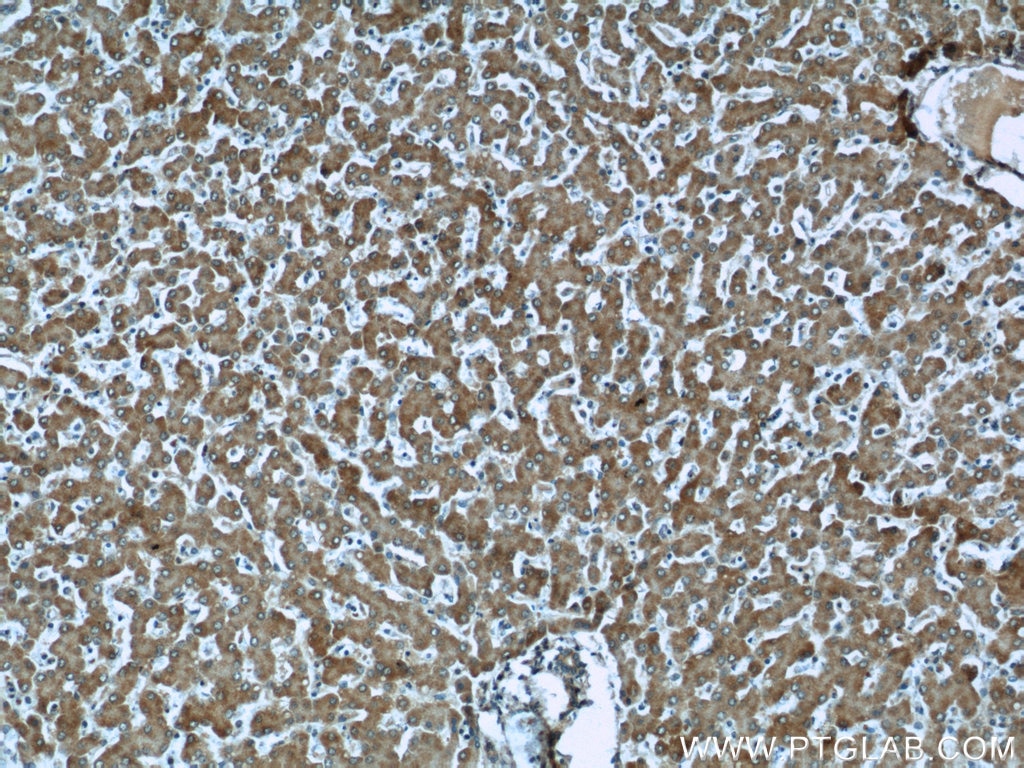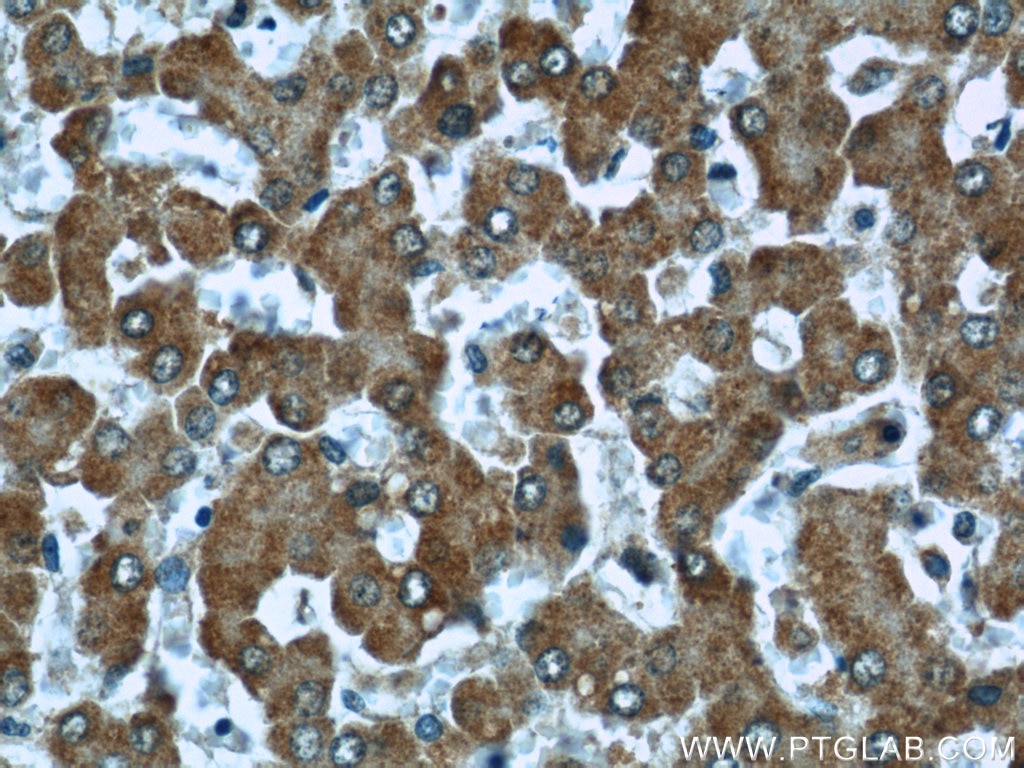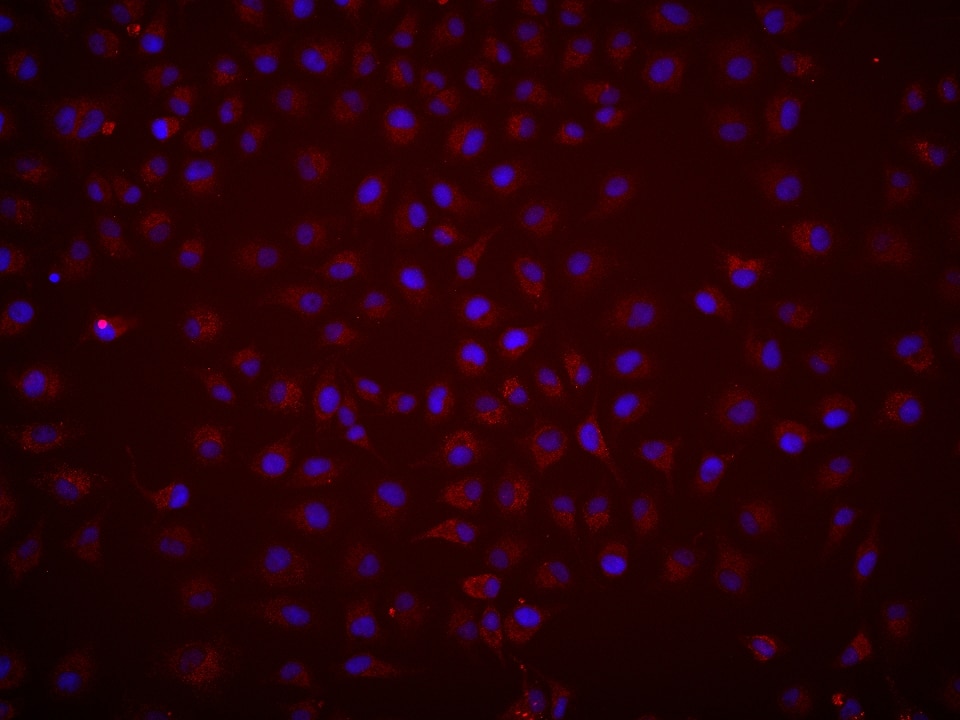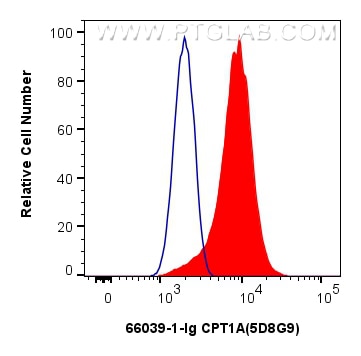Tested Applications
| Positive WB detected in | A549 cells |
| Positive IP detected in | MCF-7 cells |
| Positive IHC detected in | human breast cancer tissue, human liver tissue Note: suggested antigen retrieval with TE buffer pH 9.0; (*) Alternatively, antigen retrieval may be performed with citrate buffer pH 6.0 |
| Positive IF/ICC detected in | HeLa cells |
| Positive FC (Intra) detected in | HeLa cells |
Recommended dilution
| Application | Dilution |
|---|---|
| Western Blot (WB) | WB : 1:2000-1:12000 |
| Immunoprecipitation (IP) | IP : 0.5-4.0 ug for 1.0-3.0 mg of total protein lysate |
| Immunohistochemistry (IHC) | IHC : 1:200-1:800 |
| Immunofluorescence (IF)/ICC | IF/ICC : 1:900-1:3600 |
| Flow Cytometry (FC) (INTRA) | FC (INTRA) : 0.25 ug per 10^6 cells in a 100 µl suspension |
| It is recommended that this reagent should be titrated in each testing system to obtain optimal results. | |
| Sample-dependent, Check data in validation data gallery. | |
Published Applications
| KD/KO | See 3 publications below |
| WB | See 35 publications below |
| IHC | See 6 publications below |
| IF | See 6 publications below |
| IP | See 1 publications below |
| CoIP | See 2 publications below |
Product Information
66039-1-Ig targets CPT1A in WB, IHC, IF/ICC, FC (Intra), IP, CoIP, ELISA applications and shows reactivity with human, mouse, rat samples.
| Tested Reactivity | human, mouse, rat |
| Cited Reactivity | human, mouse, rat |
| Host / Isotype | Mouse / IgG2a |
| Class | Monoclonal |
| Type | Antibody |
| Immunogen |
CatNo: Ag7745 Product name: Recombinant human CPT1A protein Source: e coli.-derived, PET28a Tag: 6*His Domain: 406-756 aa of BC000185 Sequence: QSLDAVEKAAFFVTLDETEEGYRSEDPDTSMDSYAKSLLHGRCYDRWFDKSFTFVVFKNGKMGLNAEHSWADAPIVAHLWEYVMSIDSLQLGYAEDGHCKGDINPNIPYPTRLQWDIPGECQEVIETSLNTANLLANDVDFHSFPFVAFGKGIIKKCRTSPDAFVQLALQLAHYKDMGKFCLTYEASMTRLFREGRTETVRSCTTESCDFVRAMVDPAQTVEQRLKLFKLASEKHQHMYRLAMTGSGIDRHLFCLYVVSKYLAVESPFLKEVLSEPWRLSTSQTPQQQVELFDLENNPEYVSSGGGFGPVADDGYGVSYILVGENLINFHISSKFSCPETGIISQGPSSDT Predict reactive species |
| Full Name | carnitine palmitoyltransferase 1A (liver) |
| Calculated Molecular Weight | 88 kDa |
| Observed Molecular Weight | 86 kDa |
| GenBank Accession Number | BC000185 |
| Gene Symbol | CPT1A |
| Gene ID (NCBI) | 1374 |
| RRID | AB_11041710 |
| Conjugate | Unconjugated |
| Form | Liquid |
| Purification Method | Protein A purification |
| UNIPROT ID | P50416 |
| Storage Buffer | PBS with 0.02% sodium azide and 50% glycerol, pH 7.3. |
| Storage Conditions | Store at -20°C. Stable for one year after shipment. Aliquoting is unnecessary for -20oC storage. 20ul sizes contain 0.1% BSA. |
Background Information
CPT1A, also named as CPT1, CPT1-L and L-CPTI, belongs to the carnitine/choline acetyltransferase family. Carnitine palmitoyltransferase (CPT) deficiencies are common disorders of mitochondrial fatty acid oxidation. The CPT system is made up of two separate proteins located in the outer (CPT1) and inner (CPT2) mitochondrial membranes. CPT1A is an active forms of related liver-type carnitine palmitoyltransferase I. (PMID: 11001805). CPT1A deficiency presents as recurrent attacks of fasting hypoketotic hypoglycemia. (PMID: 15363638). This antibody can bind the close sequences genes.
Protocols
| Product Specific Protocols | |
|---|---|
| IF protocol for CPT1A antibody 66039-1-Ig | Download protocol |
| IHC protocol for CPT1A antibody 66039-1-Ig | Download protocol |
| IP protocol for CPT1A antibody 66039-1-Ig | Download protocol |
| WB protocol for CPT1A antibody 66039-1-Ig | Download protocol |
| Standard Protocols | |
|---|---|
| Click here to view our Standard Protocols |
Publications
| Species | Application | Title |
|---|---|---|
Acta Pharmacol Sin STING inhibits the progression of esophageal squamous cell carcinoma by suppressing CPT1A-mediated fatty acid β-oxidation | ||
Diabetes CEPT1-Mediated Phospholipogenesis Regulates Endothelial Cell Function and Ischemia-Induced Angiogenesis Through PPARα.
| ||
Phytother Res Angelica sinensis polysaccharide ameliorates nonalcoholic fatty liver disease via restoring estrogen-related receptor α expression in liver | ||
Commun Biol Cpt1a Drives primed-to-naïve pluripotency transition through lipid remodeling | ||
Front Pharmacol Bushen Huoxue formula attenuates lipid accumulation evoking excessive autophagy in premature ovarian insufficiency rats and palmitic acid-challenged KGN cells by modulating lipid metabolism |
Reviews
The reviews below have been submitted by verified Proteintech customers who received an incentive for providing their feedback.
FH Mohammad (Verified Customer) (04-29-2019) | working well, Without any non-specific band
|

